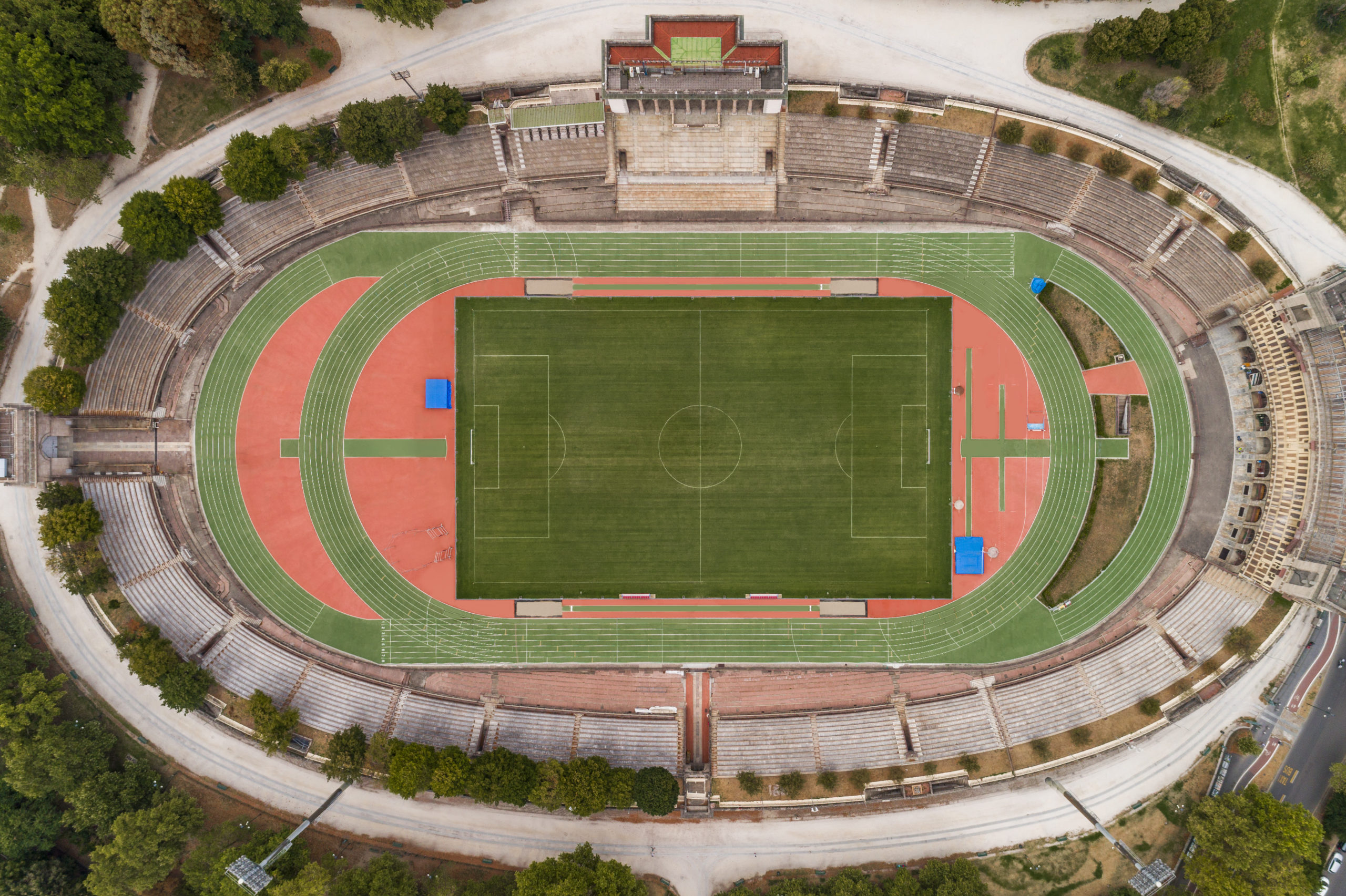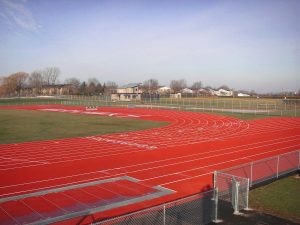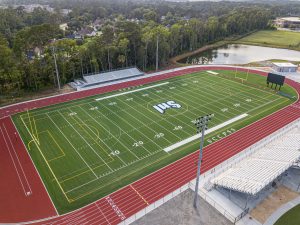Countless spectacular events have shaped the two-hundred-year history of the Arena Civica Gianni Brera, as it is known today, in Milan. Indeed, it was Napoleon Bonaparte who commissioned the amphitheatre construction for festivities and celebrations. The Arena del Foro Bonaparte was opened in 1807 with a naumachia, a re-enactment of a naval battle for which the stadium was abruptly flooded. Many other spectacular events followed, such as pyrotechnic games or the circus-like show known as Buffalo Bill’s Wild West. From the 20th century onwards, the focus has been on sport; for example, it’s served as the finish line of the Giro d’Italia or as the stadium for Inter Milan and AC Milan.
In 2002, the arena was posthumously named after the sports journalist Gianni Brera and is now mainly used as an athletics venue. In the summer of 2020, the athletic track was due to receive a new surface. A total of 10,665 m2 was to be installed, with a special colour scheme requested by the client: the actual lanes, covering an area of 6,925 m2, stay green (RAL 6021), while the 3,738 m2 segments separating the athletic tracks from the central pitch were to be orange (RAL 2008). Architect Stefano Longhi was responsible for the planning, while the company Tipiesse Srl Impianti Sportivi was commissioned with the construction.
The client’s requirements yielded a few surprises not only during planning, but also shortly before installation. The facility was initially intended to host national and international competitions. The arena was even being considered as an alternative venue for the renowned Golden Gala competition when it could not take place in Rome, the usual host city. Therefore, a World Athletics-certified athletic track system was desired; one exclusively consisting of “virgin materials”. In other words, there was to be no recycled granulate in the elastic layer, either. In terms of functionality and colour requirements, CONIPUR SW was the surface of choice. However, this system is equipped with an elastic layer made of recycled material as standard. Therefore, a project solution that can be described as a combination of CONIPUR SW and CONIPUR EPDM was chosen. For a better understanding, it’s worth taking a closer look at these systems.
The best of both worlds
CONIPUR SW is a 13-mm-thick polyurethane athletic track system with a PUR-bonded elastic layer which in this case is based on recycled technical EPDM (virgin material) and a 3 mm PUR surface layer. The high-quality PUR surface layer is highly durable, anti-slip and anti-skid in any and all types of weather. CONIPUR SW is certified according to World Athletics regulations. Its durability and the lower lifecycle costs that this yields make it an athletic track system of the highest standard.
The 13-mm-thick, PUR-bonded CONIPUR EPDM surface consists exclusively of virgin materials. It is characterised by peak quality and durability. Due to the single-layer structure, it can be installed particularly quickly and thus save costs. The layer thickness determines the performance and protective function, so the surface can be individually adapted to the needs of various users and sports.
Flexible through and through
The combination of CONIPUR SW and CONIPUR EPDM seemed to be the ideal solution. However, there was a nasty surprise during the planning stage: it turned out that the arena’s infrastructure did not meet the competition requirements. Those in charge therefore decided to use the track for training purposes. However, this also changed the requirements for the surface: competition tracks are designed to be somewhat harder so that as little of the athletes’ running energy as possible is absorbed through any surface deformation. The foot should be catapulted forward, as if by a spring. Training tracks, on the other hand, should be somewhat softer and therefore easier on an athlete’s joints so as not to overload their musculoskeletal system – even during a long training day. For this reason, the clients wanted higher force reduction properties than are provided as standard with CONIPUR SW. The CONICA specialists achieved this with a combination of a thicker, 12 mm elastic layer based on CONIPUR EPDM and a 3 mm top layer. This combination has a ca. 38% greater force reduction than the standard system. Thus, despite the problems with the infrastructure, the arena could be given a new life and now serves as a high-quality training facility.
Check out the Case Study about a special project. Download PDF





